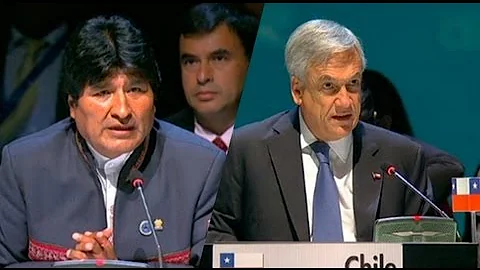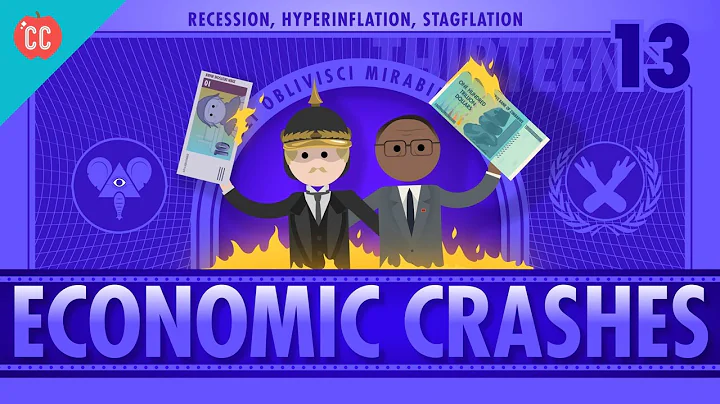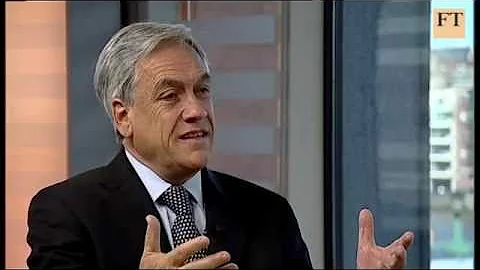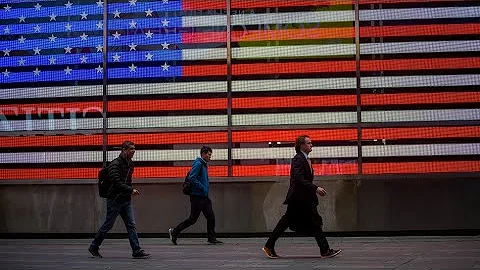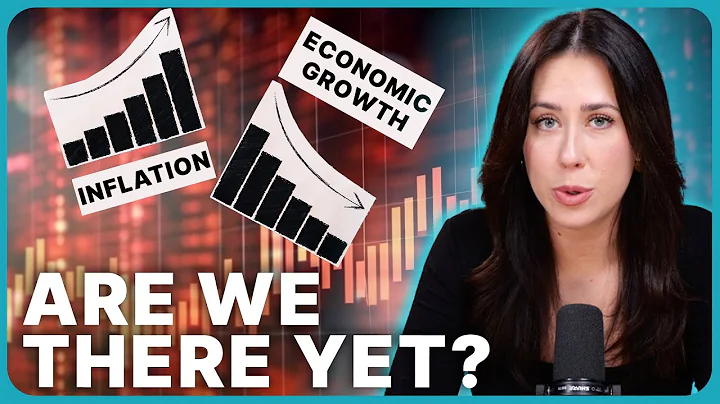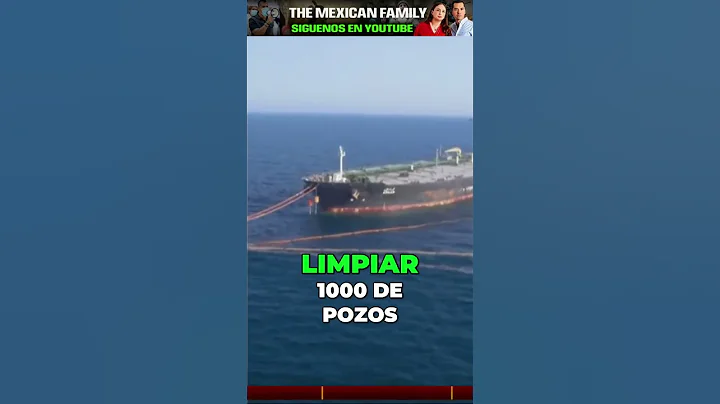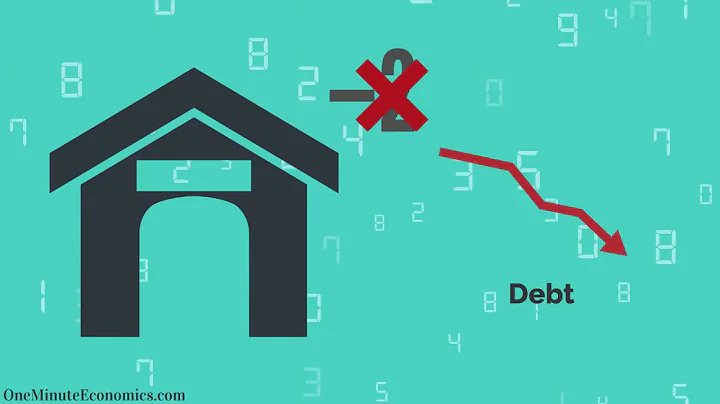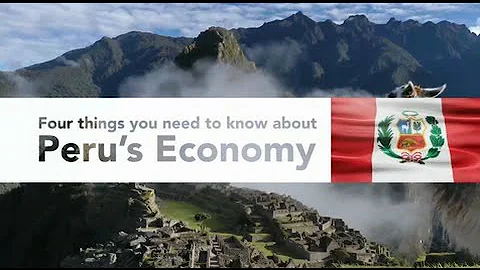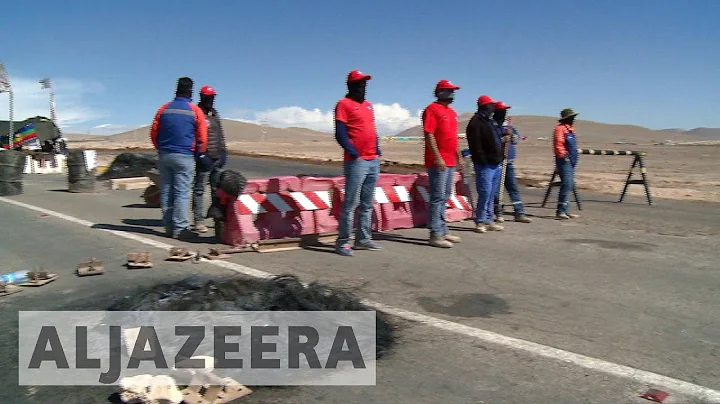[Text/Su Kui, columnist of Observer Network]
"Argentina and Uruguay are in recession, Mexico and Brazil are in stagflation, Peru and Ecuador are in deep political crisis, and Chile seems to be "It's like an oasis," President Piñera said proudly to a reporter from the Financial Times. However, he may not have noticed that the groundwater level under the oasis has dropped to a dangerous level. You will arrive at this little oasis.
On October 30, President Piñera delivered a televised speech at the Chilean Presidential Palace, announcing that the Chilean government would give up hosting the Asia-Pacific Economic Cooperation (APEC) Leaders’ Informal Meeting and the United Nations Climate Change Conference that were originally scheduled to be held in November and December this year. Prioritize responding to the domestic situation. It is worth noting that just a week ago (October 24), Chilean Foreign Minister Rivera also told the media that the Asia-Pacific Economic Cooperation (APEC) informal leaders’ meeting held in Chile in mid-November will not be cancelled. Vera even believes that the ongoing protests about social inequality in Chile make APEC more consistent with promoting free trade.
The Chilean government has made such a major and inconsistent decision in just one week. It is obvious that it has no hope of quelling domestic problems in the short term. Although he only took office in 2018, President Piñera is not a novice in handling the student movement. It can even be said that he should have been experienced. During his previous term, the "Chilean Winter" protest movement led by students in 2011 lasted for six months. For more than a month, he also witnessed the "Penguin Revolution" student movement that lasted for three months in 2006 as the leader of the opposition party at the time. But after all, the time between this protest and the APEC leaders' meeting on November 16 is too short, and he has no chance of winning.
The trigger for all this was the price adjustment of the public transportation system in the Chilean capital. Both European, American and domestic media almost unanimously attributed the real cause of the incident to the huge social gap between rich and poor caused by the so-called "neoliberal" reforms implemented in Chile during the Pinochet military government era. Without exception, public transportation is indeed an experiment in the so-called "neoliberalism" launched by the "Chicago Boys" that Chile's military government relied on in the 1970s.
However, public transportation is also the area where the Social Democratic government was the first to part ways with neoliberalism after the fall of the military government. It even underwent the most bold public transportation system reform in the world 15 years ago and is a reform model for the global public transportation industry. The subway company is one of the few state-owned enterprises in the country. The current bus system can be said to be completely different from neoliberalism, almost returning to a planned economy. It is really deplorable that public transportation, the vanguard of anti-neoliberalism, ignited the protest movement against the evil consequences of 30 years of neoliberalism. The blame for Chilean neoliberalism should not be shouldered by public transportation.
Public transportation price adjustment
Almost all media reported the protests in Chile as a subway price increase of 3 cents (RMB, Chilean peso 30 yuan). In fact, such a generalization should be very inaccurate, calling it "public transportation". "Transportation Price Adjustment" may be more accurate. Obviously, it is necessary to review the cause of this incident first.
On October 1, the Chilean Transportation Expert Committee (a statutory independent advisory body for Chilean public transportation price adjustment) announced a price adjustment proposal. As confirmed by the Chilean Ministry of Transport and Communications, the price adjustment will officially take effect on October 6 (Sunday). According to the plan, the subway ticket price will be adjusted from 8 yuan (RMB) to 8.3 yuan during peak periods (7:00-9:00 am and 6:00-8:00 pm), and will be adjusted to 8.3 yuan during off-peak periods (9:00 am-6:00 pm). 00, 8:00-8:45 p.m.) was raised from 7.2 yuan to 7.5 yuan, while the low period (6:00-7:00 a.m., 8:45-11 p.m.; 00 p.m.) was reduced from 6.7 yuan to 6.4 yuan. The bus fare will be adjusted from 7 yuan to 7.1 yuan regardless of time period.
In addition, it should be pointed out that the plan also includes canceling the off-peak period before 7 a.m., that is, changing the off-peak period from 6:30-7:00 to the off-peak period, which means that the subway fare during this period has dropped from 7.2 yuan to 6.4 yuan. The discounted fare for college, middle school students and the elderly remains unchanged at 2.3 yuan, and free admission for elementary school students is naturally not affected.Although prices have increased during most of the day (buses have only increased by 1 dime), there are indeed price cuts during some periods (it is said that up to 300,000 people can benefit), and special groups (elderly people, students) are not subject to the increase. price impact.
The capital Santiago subway implements a one-ticket system, which means a unified price regardless of distance. This is different from China's subway and even the subway fare system around the world. Such pricing is equivalent to establishing a different passenger system. The cross-subsidy mechanism between urban and rural residents benefits low-income groups living further from urban centers. In addition, Santiago's public transportation implements integrated fares, and the fare mechanism is very complicated. Simply put, after the price adjustment, the subway price also includes no more than two transfers with ground buses. This integrated free transfer public transport fare mechanism also benefits low-income groups who live further from the city center.
Judging from this price adjustment plan, the experts have indeed taken great pains, and the plan contains at least three goals. There is no doubt that the overall fare level has increased, and solving the funding gap for public transportation is the core of the plan. Secondly, cutting peak hours and filling valleys to alleviate overcrowding in the subway during peak periods is also the goal of the plan. In addition, balancing the needs of vulnerable groups is also the purpose that the plan attempts to achieve. It not only takes into account price-sensitive office workers (adding early low periods), but also does not touch special groups in society. But unfortunately, things went counter to expectations, and the experts' painstaking efforts were not recognized by students and society.
Young students are one of the most sensitive groups in Chile. There are constant student movements in Chile, and public transportation price increases have a long history in Chile as the cause of social movements. On August 16, 1949, the so-called "chaucha revolution" broke out in Chile initiated by students to protest against the increase in bus and tram fares (from 1 to 1.2 Chilean dollars at that time). In 1957, a nationwide social movement broke out in Chile again to protest against the increase in public transportation prices.
After the fall of the military government in 1990, student movements took advantage of the situation and continued to raise public transportation prices. The student bus discount card valid all year round was an important demand of the "Penguin Revolution" in 2006. The demand of the "Chilean Winter" in 2011 also included free public transportation for students. It can be said that the Chilean government should be well aware of the sensitivity of public transportation price adjustments. I am afraid that it is precisely because of this that students are not affected by this price adjustment.
In fact, in comparison, the Chilean government’s public transportation subsidies for students can be said to be very generous. Its expenditure accounts for 50% of the public transportation subsidies. The discount is so large that it is rare in the world. For example, all primary school students are free of charge, and eligible college students can also enjoy discounts, roughly 30% off discounted fares, etc. This exceeds that in China or almost all major cities in Western countries.
![[Text/Observer.com columnist Su Kui]](https://cdn-dd.lujuba.top/img/loading.gif)
Police uniformed protesting students (Photo source: IC Photo)
However, it was as if the curse of Murphy's Law had haunted Chile, and it was the middle school students who had benefited the most and were not affected by the price adjustment who took the lead and provoked the entire incident. On October 11, 80 high school students from the National Institute of Chile (a top boys’ public high school with a history of more than 200 years) launched the “No Ticket Campaign” on social media (deliberately entering the subway station without swiping their card through the gate). Protests against subway fare increases started this world-famous protest.
According to reports, as of November 6, the damage to the subway has reached 400 million U.S. dollars, and the entire society has suffered losses as high as 3 billion U.S. dollars. More than 7,000 people have been arrested. What is even more sad is that 23 people have lost their lives. life.
Adding fuel to the fire
In fact, until the 18th, the main body of this protest was students, and the scale was not very large. However, a series of comments by cabinet ministers in the right-wing government led by President Piñera, a neoliberal believer who graduated from Harvard University's Department of Economics and has a net worth of US$2.7 billion, added fuel to the fire and quickly pushed the movement to the next level. climax.
First, on October 8, Finance Minister Felipe Larraín spoke to the media about the stable consumer price index (CPI) in September, saying that the price of flowers has dropped and people should be more romantic. When explaining the increase in subway fares starting from the 6th, he said the increase was to allow early-rising passengers to get lower prices.Subsequently, the Minister of Economy made similar remarks regarding the protests, saying that citizens who are unwilling to bear the increase in subway prices can get up earlier and go home later, and instead enjoy the benefits of price reductions.
According to statistics, the average daily round trip time for Santiago residents by public transportation on weekdays is 84 minutes, while 23% of residents in outer suburbs spend more than 2 hours. Some citizens told reporters that if they leave early and return late at this time, their children will not get up when they go out in the morning. When they return home at night, their children will have gone to bed. They will have no time to communicate with their families. They do not want to lose their family ties. In the eyes of those citizens who travel long distances every day, the two ministers' remarks that they can get discounts if they leave early and come back late are simply the arrogance of elites who don't know the sufferings of the people.
On October 16, Transport Minister Gloria Hutt stated that student fares had not been adjusted and that students had no reason to deliberately evade fares in protest, and insisted that the prices of public transportation would not be changed.
html On the 17th, the candid comments of Juan Enrique Coeymans, the initiator of this price increase and the chairman of the expert committee, were even more explosive. First of all, he did not think this was just a price increase plan. The committee had considered the needs of all aspects. . He also said that the price of long-distance buses has doubled, but people did not say anything and did not protest by forcing people to get on the bus without buying a ticket. The prices of potatoes, bread and other items have also increased, and no one protested. These protesters are biased against changes in public transport prices, and he does not even rule out the possibility of further price increases in the future. This is simply a provocation! He also talked about the Sino-US trade negotiations, saying that if things between China and the United States are settled, the exchange rate and oil prices will change, and public transportation fares may not need to be increased.![[Text/Observer.com columnist Su Kui]](https://cdn-dd.lujuba.top/img/loading.gif)
Media reported that Comans did not protest about the increase in potato prices (picture source: web screenshot)
Comans even believed that political forces were behind the protest. According to Chilean officials, Venezuela is fanning the flames. The U.S. State Department accused Russia of being behind it. However, Chilean students think it is neoliberalism. Their logic is "Is it worse (for the rich) to evade taxes, or (for us) to evade fares?"
Stimulated by various remarks by ministers, students began to evade fares on the 18th. The protests eventually evolved into large-scale street protests across society. That night, a photo of President Piñera celebrating his grandson's birthday at a high-end restaurant in a wealthy area, protected by his bodyguards, went viral on social media, adding fuel to the fire, and the protests escalated into large-scale riots. Late at night, Piñera declared a state of emergency. The last time was in 1987 during the dictatorial military government.
![[Text/Observer.com columnist Su Kui]](https://cdn-dd.lujuba.top/img/loading.gif)
Female college students hold protest signs that read "Neoliberalism was born in Chile and will die in Chile" (Photo source: Twitter)
The Sorrow of Neoliberalism
Judging from the history of the development of public transportation, public transportation in all cities is It was started by private enterprises, but as soon as public transportation appeared, it was quickly brought under government control. In the beginning, it was largely because public transportation occupied the scarce public resources managed by the government - roads as its business premises, and affected public order. After the city expanded, public transportation became an important part that affected citizens' daily lives and thus had great significance. It has a huge political impact, which is why governments around the world have put it under control. Chile is no exception and has also experienced such a process.
In 1953, President Gabriel González Videla said in a speech to the nation that public transportation was so important to the people, but its prices had been rising. In order not to increase people's living costs, the current government decided to establish a state-owned enterprise and establish an intervention mechanism to improve public transportation services. Parliament passed a special law (DFL No. 54 May 1953) establishing a state-owned public transport enterprise (ETCE). This law clearly stated that the state was directly responsible for public transport services and prevented private enterprises from turning public transport into a profit-making industry. Necessary, the sole purpose of state-owned bus companies is for the public good. In fact, this state-owned enterprise not only directly provides public transportation services, but also assumes the role of regulator of the public transportation industry, including licensing and price control of private bus lines.
However, the establishment of state-owned bus companies did not solve the problem of insufficient public transportation supply, nor did they become the main force in the bus market. For example, by 1956, private bus companies still owned 64% of the transportation capacity. People still complained about bus services, which provided the military government with an excuse to implement radical neoliberal reforms in the future.
In 1973, under the instigation of the United States, Pirochet came to power through a coup and began to use a large number of so-called "Chicago Boys". Neoliberals who believed in marketism did not forget the public transportation industry. Public transportation was considered to be no different from other private goods. Perfect market competition can be implemented, and the government should completely withdraw from the market. On November 30, 1981, this state-owned bus company was dissolved and its vehicles were auctioned. At the same time, the bus industry is fully marketized, with complete freedom of operation (any individual or enterprise does not need any conditions, no licenses or registrations), complete freedom of employment (for example, bus drivers do not need any additional conditions), complete freedom of route setting, fares Total freedom. Industry policies have made a 180-degree U-turn. Compared with the conditional market-oriented reform of the British bus industry in the same period (1985) (including limited government service provision and light regulation), Chile is an absolute marketist revolution. These "Chicago boys" may be a little I despise Mrs. Thatcher for her cowardice.
Under the completely laissez-faire policy, the public transportation industry has indeed entered a major development, rapidly moving from insufficient supply to severe oversupply. In less than two years (1983), the number of vehicles increased by 40%, reaching 7,278 vehicles. In 1990, on the eve of the fall of the military government, the number of vehicles reached 13,698, an increase of 170% compared to before the reform. Bus services are indeed less crowded, and bus vehicle utilization has dropped by 55%.
There are no entry conditions. A large number of individuals have entered the bus market, and the market competition is fierce. Even after re-regulation began in 1991, until 1998, when the government forced a considerable number of vehicles and market entities in extremely poor condition to withdraw from the market, the number of market entities was still as high as 3,868, with an average number of vehicles per market entity of only 1.88. The market is completely atomized. Everyone tries to control costs to a minimum, and vehicles will not be withdrawn unless absolutely necessary. The average vehicle age is more than 12 years old. It can be said that in many countries, these vehicles should have been parked in scrapyards waiting for disposal. Santiago was one of the most polluted cities in the world in the 1980s, with public transportation being the largest contributor.
Fierce competition has made the main passenger flow corridors full of buses. The city's seven main arterial roads include 80% of the bus routes. The bus vehicles soliciting passengers on the roads cause serious interference to road traffic. To make matters worse, vehicles chase each other for passengers. 85% of traffic accidents in urban traffic are caused by public transportation vehicles. The number of deaths caused by public transportation vehicles every year is much higher than the normal level. For example, in 2001, the number of public transportation accidents that year The number of cases reached 7,392, resulting in 5,699 injuries and 112 deaths. Even compared to China, which is also a developing country, the fatality rate in bus accidents is 8-10 times higher.
According to neoliberal rhetoric, competition can lead to better services and lower prices, but such beautiful results have not appeared for 10 years after public transportation was fully marketized. From a service point of view, the average line length is actually as high as 63 kilometers (normally it should not exceed 20 kilometers), while the average bus trip distance for Santiago citizens is only about 7 kilometers. The dilapidated vehicles are constantly taking detours to get more passengers, and the Passengers are forced to travel longer and there is no quality of bus service at all. The price has also become more expensive. Compared with 10 years ago, the price in 1990 has increased by almost 100%. However, the price of oil has not increased in these 10 years. The price of oil in 1990 was even lower than that in 1979, let alone After complete marketization, there will no longer be any compliance costs caused by regulation.
Obviously, the magical market power has not manifested itself in the public transportation industry as neoliberals expected. Instead, the high social costs have been overwhelmed, and reforming the public transportation system has become the consensus of the whole society.
Creation Big Bang Reform
In fact, two years before the fall of the military government, the opposition party had organized transportation experts to study public transportation reform plans. As soon as the new democratically elected government came to power, it announced public transportation reform measures and brought public transportation back into government control. The main measures include franchising of bus lines, forced withdrawal of vehicles (no more than 10 years), and dynamic adjustment of bus fares. Taking bus fares as an example, the government sets an adjustment mechanism based on enterprise bidding fares to dynamically adjust prices.
Ten years after the government intervened (2001), the number of vehicles decreased from nearly 14,000 to 8,179, but the average daily passenger volume increased from 3.58 million to 4.28 million, the vehicle utilization rate doubled, and the average vehicle age dropped By 6 years, the average waiting time of citizens was not much different from before, only about 4 minutes.
However, the bus lines basically continue the original layout, with serious duplication of routes. The bus companies are only nominal companies formed by a simple collection of self-employed people, and the management is not in place. This kind of reform is not the ideal model of experts. The bus market is still a market dominated by private forces. The government only acts as a regulator and has limited participation. Left-wing politicians are still very dissatisfied. The reforms in the first 10 years were just a prelude. The real Big Bang-style reforms would not start until 2005 and were fully implemented in February 2007.
First of all, it is a large-scale integration of public transportation. Buses and subways together form a large public transportation brand Transantiago. All operating companies form a public transportation commune (also called a public transportation community), and fare revenue is uniformly distributed. Secondly, a third-party clearing agency is established to be responsible for the ticketing system (such as transportation cards) and unify the public transportation fare system, including free transfers between bus trunk lines and branch lines, and between buses and subways. The third is line reorganization. Engineers threw all existing lines aside. The newly designed line network is divided into regional branch lines and urban trunk lines. Different colors are used to identify different areas and line types. The lines have been reduced from nearly 400 lines before. It was reduced to 223, and the number of vehicles was reduced from nearly 8,000 to 4,489. The fourth is to establish a dynamic fare mechanism, taking CPI, oil prices, exchange rate changes, etc. as the main considerations, and review it once a month by an independent expert committee.
It can be said that this is one of the most bold public transportation reforms in the world, and the ideals of planning engineers and politicians have been realized. However, the reform did not go smoothly, and even the results were somewhat bad. The implementation was obviously insufficiently prepared, and the system fell into complete chaos. Passengers' waiting times were extremely long, the number of transfers increased by almost 10 times, and the number of people getting on the bus was also overcrowded. President Bachelet was forced to publicly apologize. After continuous adjustments, strict line zoning was basically cancelled, and efficiency was no longer blindly emphasized. The number of vehicles increased to 6,564, and Santiago's public transportation services gradually got back on track.
But the paradox is that when the government fully controls public transportation services, companies no longer care about route settings, prices, service levels, etc. For example, in the beginning, companies only obtained income based on the mileage of vehicles operated, and the government fell into a quagmire of losses in public transportation. Before the great reform, there were no government subsidies for public transportation. After the reform, in order to prevent public transportation prices from rising too quickly, public transportation subsidies have been increasing. To this end, Congress passed four laws related to public transportation subsidies. From 2006 to 2018, the cumulative total of government subsidies exceeded US$9 billion. In 2016, public transport subsidies alone accounted for 63% of the Chilean Ministry of Transport’s budget. Public transportation prices actually only account for about half of the actual costs, such as 51.66% in 2017. Obviously, the Chilean central government does not support Santiago’s public transportation.
What’s worse is that the government’s dominance of public transportation also means that it has taken all the contradictions on itself. Any public transportation issues can only be directly faced by the Chilean central government. Public transportation prices are the most sensitive one.
It’s every straw that breaks the camel’s back
It’s not the last straw that breaks the camel’s back, but the heavy burden that has been on the camel’s back before. Every straw has its responsibility.The price adjustment in October was the last straw. In fact, in 2018 alone, it was adjusted twice in February and October, and was raised again in January 2019. In just two years, fares have been adjusted four times. The maximum subway fare has been raised from 7.4 yuan to 8.3 yuan, and the bus ticket has been raised from 6.4 yuan to 7.1 yuan. The frequency and magnitude of such adjustments cannot be considered small.
In contrast, the previous left-wing President Bachelet was much luckier. There were almost no adjustments during her four-year term, except for one adjustment a month before leaving office (February 2018), while the right-wing President The billionaire president has made three adjustments in his first year and a half in office. You can imagine the mood of the people. If we look at it over a longer period of time, the subway fare was 4.2 yuan in 2007, and this time it was adjusted to 8.3 yuan in 2019, almost doubling, while per capita GDP only increased by about 50% during the same period. In contrast, public transportation fares in major cities in China have remained almost unchanged during the same period. Obviously, too frequent adjustments to public transport prices is definitely a heavy bale of straw.
The subway fare is 8.3 yuan, which is definitely a high fare for a city whose development level is relatively close to China's megacities. This is basically equivalent to Hong Kong’s average ticket price in 2018 ($8.28), but Hong Kong’s economic development level far exceeds that of Santiago. It can be compared that the average fare in major cities in China rarely exceeds 4 yuan. Taking Shenzhen as an example, according to officially disclosed data, in 2017, the cost of a Shenzhen subway trip was 8.91 yuan, and the average fare actually paid by passengers was 4.15 yuan, which is already relatively high.
However, it should be noted that the fare of 8.3 yuan in Santiago is actually the highest fare for subway and bus rides. This price also includes transfer services with buses. Taking December 2018 as an example, the peak subway fare at that time was 7.8 yuan, but the actual passenger clearing fare received by the subway company was 4.46 yuan, and the passenger cost was about 7.9 yuan (the 2018 passenger fares announced by Beijing-Hong Kong Metro The cost is 11.28 yuan). The loss in 2018 reached 1.76 billion yuan. It is difficult for the government finance to provide more support. The subway company still has two lines under construction. Issuing bonds to raise funds in overseas financial centers such as New York requires the company to be profitable. Ability, some bus companies even sued the Chilean government for failing to pay enough subsidies, which is why fares must increase in 2019. Obviously, this integrated fare mechanism and one-vote system makes the fares of public transportation appear relatively high, which puts citizens under psychological pressure. Those who do not need to transfer and short-distance passengers feel even more disadvantaged. In other words, the straw that broke the camel's back also included its special fare system.
Fare evasion is a major feature of Chilean public transportation. In 2018, the bus fare evasion rate in San Diego reached 28.5%, an increase of 20% from 23.7% in 2017. According to research, this is related to the two fare increases in 2018. Fare evasion has its natural logic, that is, there is a gap between the bus fare and the expected service quality. Simply put, it is not worth it. Fare evasion is to protest the quality of bus service, and the price increase further amplifies this gap, so the fare evasion is The higher the fare, the higher the fare evasion rate.
Santiago's public transportation does still have a lot to improve, but it is second to none in South America and among the best in the world. Fare evasion will not promote the improvement of public transportation. Any fare evasion behavior will ultimately be paid by other passengers and the whole society. What is worse is that the financial situation of public transportation will be further deteriorated by increasing anti-fare evasion costs, which will further reduce service quality in the long term.
If everyone can buy tickets and ride the train, ticket revenue can increase by 40%. Even if the revenue increases by 20%, there will be no need to increase ticket prices in 2019. There is such widespread fare evasion in Chilean society. It cannot but be said that this society is sick. What breaks the camel's back is the entire social environment.
Chilean neoliberals have privatized and marketized almost all important public sectors such as pensions, health care, education, electricity, and water. In 2017, 1% of the rich owned 33% of the wealth, while 50% of the poor owned only 2.1% of the wealth. Social differentiation was extremely serious. According to a survey by Chile's National Statistics Institute, 70% of people in the country have a monthly income of less than US$700, and the median monthly salary is about US$562. For some low- and middle-income groups, the cost of public transportation is even as high as 25% of family income.
“It’s not about 30 pesos, it’s about 30 years” is a resounding slogan of this movement. The new public transportation system is the boldest anti-neoliberal achievement in 30 years. What Chileans are protesting is that the creed of neoliberalism still dominates Chilean economic and social life 30 years after the fall of the military government. Unfortunately, various coincidences , the detonation location was chosen on public transportation. Over the past 30 years, the unfair distribution that has been widely felt in Chilean society should be the heaviest straw.
![[Text/Observer.com columnist Su Kui]](https://cdn-dd.lujuba.top/img/loading.gif)
The protestors' slogan "It's not about 30 pesos, it's about 30 years" has become the core slogan of many media reports (Photo source: Web page screenshot)
As a resource-based economy, fluctuations in international foreign exchange and commodity prices have profoundly affected Chileans. daily life. Since 2018, international copper prices have dropped by 20%. As the world's largest producer of copper and other mineral resources, the extent of the impact on the Chilean economy can be imagined. The Chilean peso has hit a new low, and the U.S. dollar has appreciated relative to the peso since 2018. Nearly 30%, and the oil, vehicles, parts, lubricants, etc. required for public transportation need to be imported. These are all factors in the public transportation price adjustment formula. It’s not just public transportation that is adjusting prices. For example, electricity prices have been adjusted twice in 2019, with a 10.5% increase in May. The public transportation price adjustment was announced only 2 weeks ago (September 25), and it was increased by 9.2%. The relevant person in charge even said that considering the continuous depreciation of the peso, it is expected that electricity prices will need to be increased by 20% in early 2020, and the adjustment of electricity prices will affect the operating costs of the subway.
The resources generously gifted by God have actually been priced secretly, and they can only be paid when needed. This may be the fate of resource-based countries. Those rich mineral resources were not the straw that broke the camel's back.
